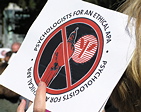Hudson River State Hospital
![[Hudson River State Hospital Old Building Drawin]](page0_blog_entry10_1.jpg)
Driving onto the property of the Hudson River State Hospital took visitors into a very different world than the one outside the hospital's stone walls. In the mid-1960s, the patient population living on the grounds of the facility could be numbered in the thousands (at its height, the hospital lodged about 9,000 patients in a mostly self-sustained and enclosed "total institution" as Erving Goffman would have termed it). As our car wound its way past the older buildings on the campus (the picture to the upper left is a drawing of the original "Kirkbride" building at HRSH), we would see many groups of patients being led from one place to another by staff members while, in other spots, patients were sitting in chairs or on benches simply staring out at whatever could be found nearby. It was, I recall, a very quiet environment and few of the mostly older and dilapidated-looking residents seem to speak at all to anyone nearby. Nonetheless, the grounds went on and on and occupied many tree-filled acres.
Psychologist Michael Britt, Ph.D. offers a glimpse into the Hudson River State Hospital (HRSH, later renamed the Mid-Hudson Psychiatric Center), in a recently-posted podcast interview on his website, The Psych Files. Dr. Roger Christenfeld, Research Director at a drastically-smaller current facility, discusses the history and therapeutic work of the HRSH in his interview with Britt. During 33 minutes, Christenfeld provides a glimpse of why the hospital was built and opened in 1869, what life was like for many patients in the late 19th and early 20th centuries, and how the notion of a state psychiatric facility changed profoundly after about 1955.
Target Link: Episode 27: From Insane Asylum to Psychiatric Center: A Brief History (33 minutes, the interview is in mp3 format and can be downloaded to your computer)
Associated Resources
- Historic 51: A website devoted to the history of the Hudson River State Hospital. Includes many images and other information (e.g., a timeline) telling the story of the HRSH
- Kirkbride Buildings: This website has photos of the "Kirkbride" style building at HRSH, a standard form for psychiatric asylum buildings in the 19th century. As the introduction to this site explains: "Once state-of-the-art mental healthcare facilities, Kirkbride buildings have long been relics of an obsolete therapeutic method known as Moral Treatment. These massive structures were conceived as ideal sanctuaries for the mentally ill in the latter half of the nineteenth century. Careful attention was given to every detail of their design in order to promote a healthy environment and to convey a sense of respectable decorum. Placed in secluded areas within expansive grounds, many seemed almost palace-like from the outside. But growing populations and insufficient funding led to unfortunate conditions that spoiled their idealistic promise."
Out of Body: Sensory Manipulation and the Experience of "Self"

In research that was just reported in latest issue of the journal, Science, two different teams of researchers at European universities have manipulated the visual and tactile sensory systems of study participants to induce the illusion that these persons were "out of their bodies". As Sandra Blakeslee reports in the New York Times (August 24, 2007):
The longer of the two studies (Lennenhager et al., 2007) offers this abstracted description of their findings:Using virtual-reality goggles, a camera and a stick, scientists have induced out-of-body experiences — the sensation of drifting outside of one’s own body — in ordinary, healthy people, according to studies being published today in the journal Science. When people gazed at an illusory image of themselves through the goggles and were prodded in just the right way with the stick, they felt as if they had left their bodies. The research reveals that “the sense of having a body, of being in a bodily self,” is actually constructed from multiple sensory streams, said one expert on body and mind, Dr. Matthew M. Botvinick, an assistant professor of neuroscience at Princeton University. Usually these sensory streams, which include vision, touch, balance and the sense of where one’s body is positioned in space, work together seamlessly, Dr. Botvinick said. But when the information coming from the sensory sources does not match up, the sense of being embodied as a whole comes apart. The brain, which abhors ambiguity, then forces a decision that can, as the new experiments show, involve the sense of being in a different body.
These results raise provocative questions about what it means to be a "self" and may actually move clinical researchers more deeply into an examination of neuroperceptual mechanisms in disorders such as schizophrenia. At the recent APA meeting in San Francisco, I heard a fascinating (and very difficult) paper by Louis Sass, Ph.D. of Rutgers (NJ) who presented a phenomenological model of schizophrenia, one which is rooted in defective processing of perceptual experience by the individual.Humans normally experience the conscious self as localized within their bodily borders. This spatial unity may break down in certain neurological conditions such as out-of-body experiences, leading to a striking disturbance of bodily self-consciousness. On the basis of these clinical data, we designed an experiment that uses conflicting visual-somatosensory input in virtual reality to disrupt the spatial unity between the self and the body. We found that during multisensory conflict, participants felt as if a virtual body seen in front of them was their own body and mislocalized themselves toward the virtual body, to a position outside their bodily borders. Our results indicate that spatial unity and bodily self-consciousness can be studied experimentally and are based on multisensory and cognitive processing of bodily information.
Target Articles: (A) Ehrsson, H. H. (2007, August 24). The experimental induction of out-of-body experiences. Science, 317(5841), 1048. (B) Lenggenhager, B., Tadi, T., Metzinger, T, & Blanke, O. (2007, August 24). Video ergo sum: Manipulating bodily self-consciousness. Science, 317(5841), 1096-1099.
Newspaper Report: Blakeslee, S. (2007, August 24). Studies report inducing out-of-body experience. New York Times (Online).
Other Citations: Sass, L. A., & Parnas, J. (2001). Phenomenology of self-disturbances in schizophrenia: Some research findings and directions. Philosophy, Psychiatry, & Psychology, 8(4), 347-356. [LMC Access]
Sass, L. A., & Parnas, J. (2003). Schizophrenia, consciousness, and the self. Schizophrenia Bulletin, 29(3), 427-444. [Abstract]
APA San Francisco (Fri): The Question of Torture
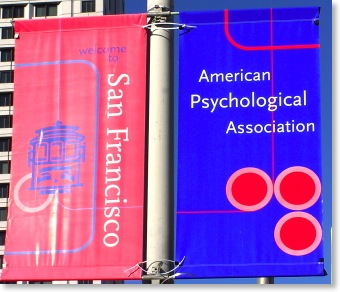
The pressing issue of this convention turns out to be the question of the torture of prisoners by the United States government's forces in places like Guantanamo Bay, the involvement of psychologists in developing or advising about interrogation techniques which are torturous, and the ethical lapses or failures of both these psychologists and the American Psychological Association itself in rejecting such activities. My first session this morning involved a symposium/discussion on the topic: "Ethics and Interrogations-Confronting the Challenge: What Does the Research on
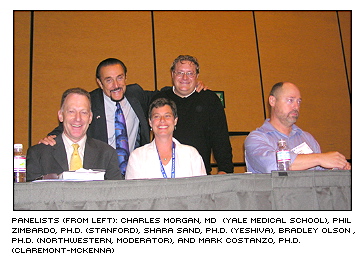
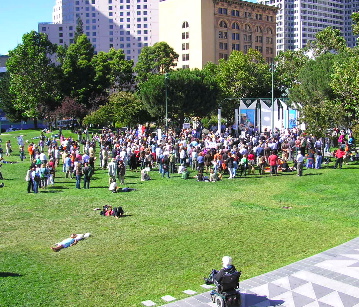
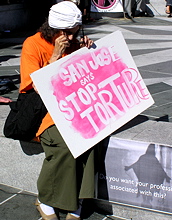
Later in the day, there was a demonstration in the Yerba Buena Gardens across from Moscone South by Psychologists for an Ethical APA. The crowd it attracted seemed to me to consist of about 200-300 pretty committed and enthusiastic. On Sunday morning, the APA Council of Representatives is going

